Ghost is an open-source blogging platform that allows individual writers to reach their target audience and build a relationship with them via an integrated newsletter. The term Ghost blog SEO become very popular at that time. Because Ghost has become an essential blogging platform, its user interface and overall setup promote simplicity and deliver an excellent page experience with fast-loading pages by default.
What is Ghost Blog SEO?
Ghost SEO is a revolutionary system for improving your website’s search engine rankings through content optimization and link building. It focuses on quality content optimized for search engine algorithms and building strategic relationships with other websites. It is a complex art and science that heavily depends on the content you create.
SEO manages this by improving the content, code, and other elements on your website, such as images, so that search engines like Google, Bing, and Yahoo will rank it higher on their results pages.
Top 10 Crucial Google Ranking Factors for Ghost CMS
Many of these things are handled automatically by Ghost, but others require some configuration. We’ll tell you everything step by step.
1.) XML Sitemaps
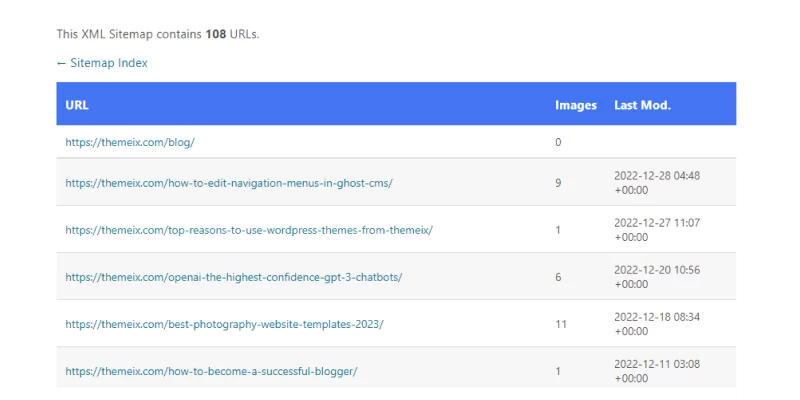
One of the most fundamental things you should do for your website to rank in search engines is to have a file that tells search engines what pages are on your site and where they can be found at what URL.
Ghost creates this sitemap for you automatically, so you don’t have to do anything else. But you need to check the sitemap carefully. If the sitemap is ok, then submit this in Google Search Console. Here is an example of a sitemap-
2.) Title and Description
Each blog post requires a unique title and description. Many bloggers prefer to use a unique description. If you don’t specify one, Google will use the first paragraph of the page (or post) as the description and display it in the search result snippet. It is one of the essential factors of Ghost blog SEO.
3.) URL Optimization
Ghost generates URLs based on the title of your post. So, if your post’s title is “Ghost SEO,” Ghost will create the URL slug “ghost-seo” for you.
One important consideration is that Moz recommends using short URLs to maximize the impact of keywords included in your URLs. By default, Ghost follows this and generates a two-word slug.
4.) Meta Tags Optimization
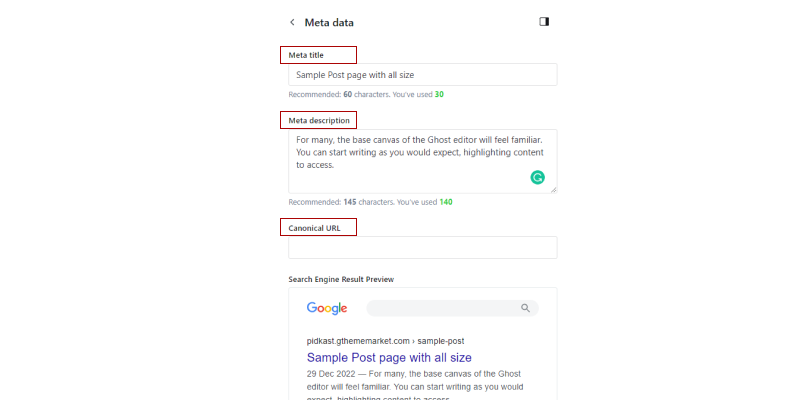
Ghost will use your post’s title and excerpt as the Meta Title and Description if you don’t do anything. However, you should give these meta tags some extra thought because, according to Google, they provide users with a “quick insight into the content of a result and why it’s relevant to their query.”
Make sure that your Title and Description are showing up correctly for your most important keywords, as the automatically generated ones are not user-friendly and will reduce your click-through rate.
5.) Image Alt Tags
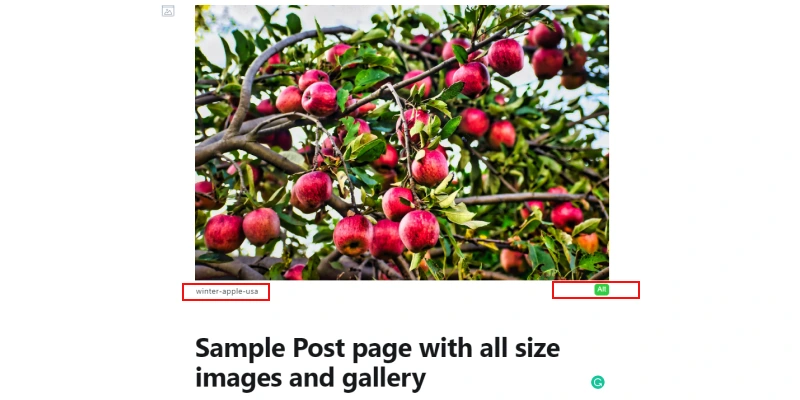
Every image should have an Alt tag – not only because it is good practice for accessibility but also because it is an excellent opportunity to include a few more keywords.
You can change this by selecting an image in Ghost and clicking the Alt button in the bottom right corner.
6.) Internal and External Linking
Your website’s internal and external linking must be optimized if you want a successful SEO strategy. Using relevant internal and external links on your website will eventually improve your website’s search visibility and rank.
Internal links encourage visitors to spend more time on your website. On the other hand, by giving a viewer reference, valuable external links will also help increase your website’s authority.
7.) Canonical URLs
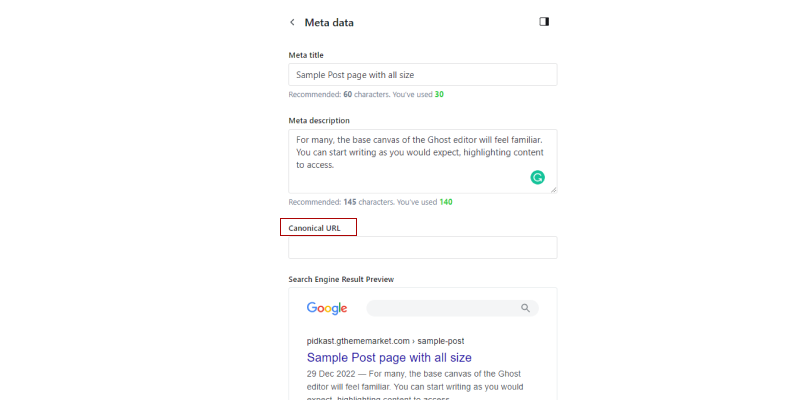
Next, consider Canonical URLs. When Google detects duplicate or similar content, canonical URLs instruct it to index the appropriate page. This appears when your agency reposts or cross-posts your content.
By default, Ghost will set the Canonical URL of a post to that post’s URL. If you are reposting content that has already been published somewhere else – for example, if you did a guest post on another site and want to repost the content on your site – you must set the Canonical URL to the URL where it was initially published.
8.) Schema Set Up
There are a lot of schema plugins in WordPress, and the most popular SEO plugins make it simple to add various types of schema markup to your articles.
In Ghost, you can add schema (with Code Injection), but you have to write it or generate it with a 3rd party tool.
9.) Social Media Cards
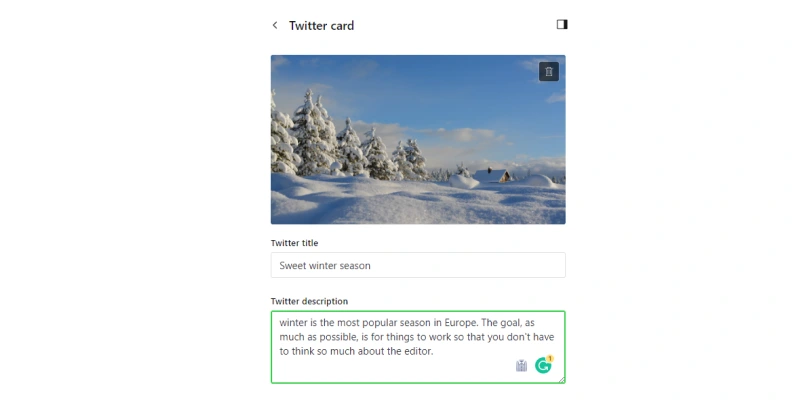
The next step is to consider customizing cards for social media. Ghost now does a lot of the legwork for us here; Ghost creates the card that appears when we share one of our blog posts on Facebook or Twitter.
If you don’t make any changes here, Ghost will take your Title and Excerpt, but you should spend some time optimizing this. Shorter is better in this case, as you’ll want to grab someone’s attention while they’re scrolling through their Facebook or Twitter feed.
10.) Speed and Performance
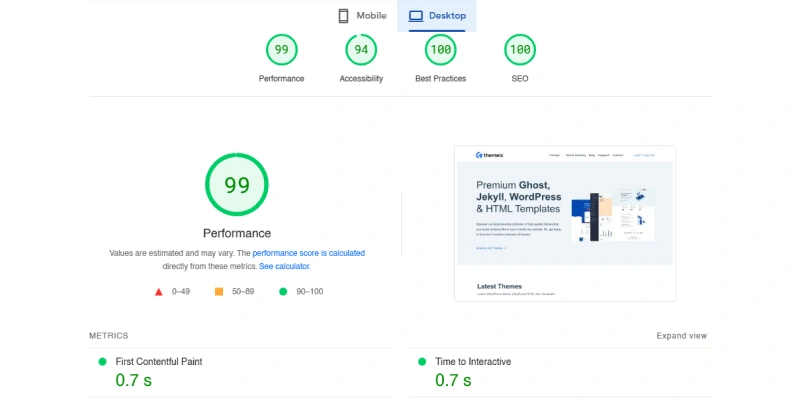
Google recently made Page Speed a part of its ranking algorithm, which has increased the importance of speed in SEO. Ghost is faster than WordPress because it is built on newer technology.
However, you should still take a few extra steps to get the most out of Ghost.
So, when choosing a theme and hosting for your ghost blog, be careful. To perform this measurement, you can use Google’s Page Speed Insights.
To Sum Up
Ghost is an excellent platform for publishing SEO-optimized articles without additional plugin searching or admin panel optimization. It’s simple to use and free if you self-host, with fast-loading pages and built-in newsletter functionality. Besides if you need SEO-friendly ghost blog themes then visit our website here- themeix.com
No Comment